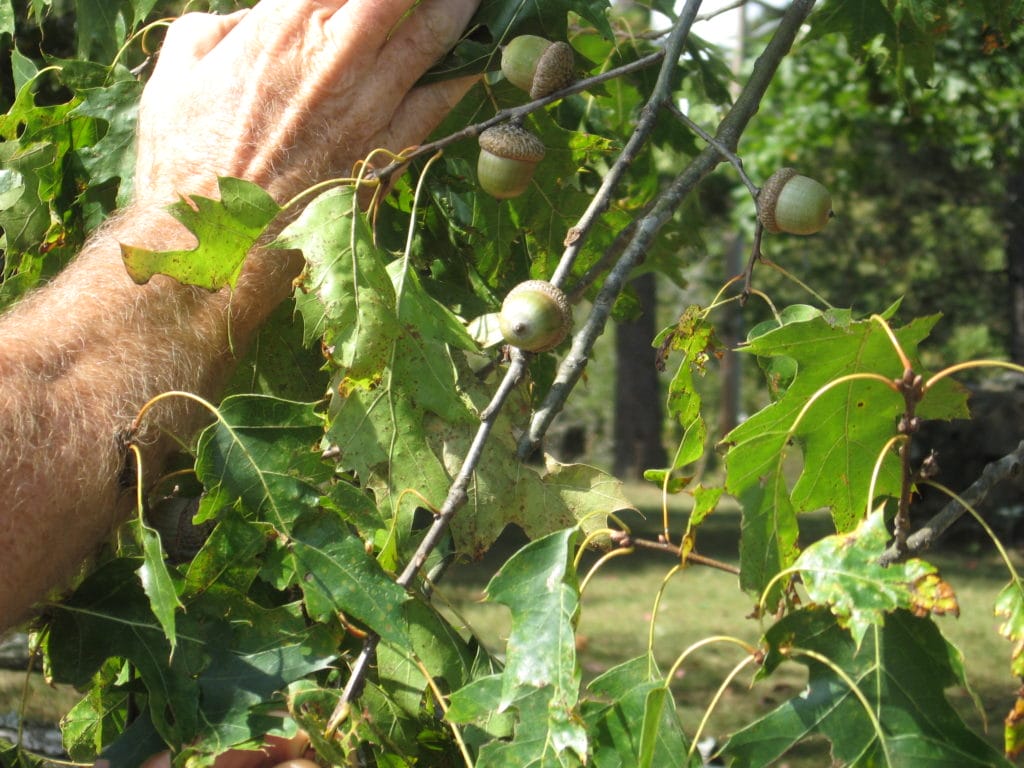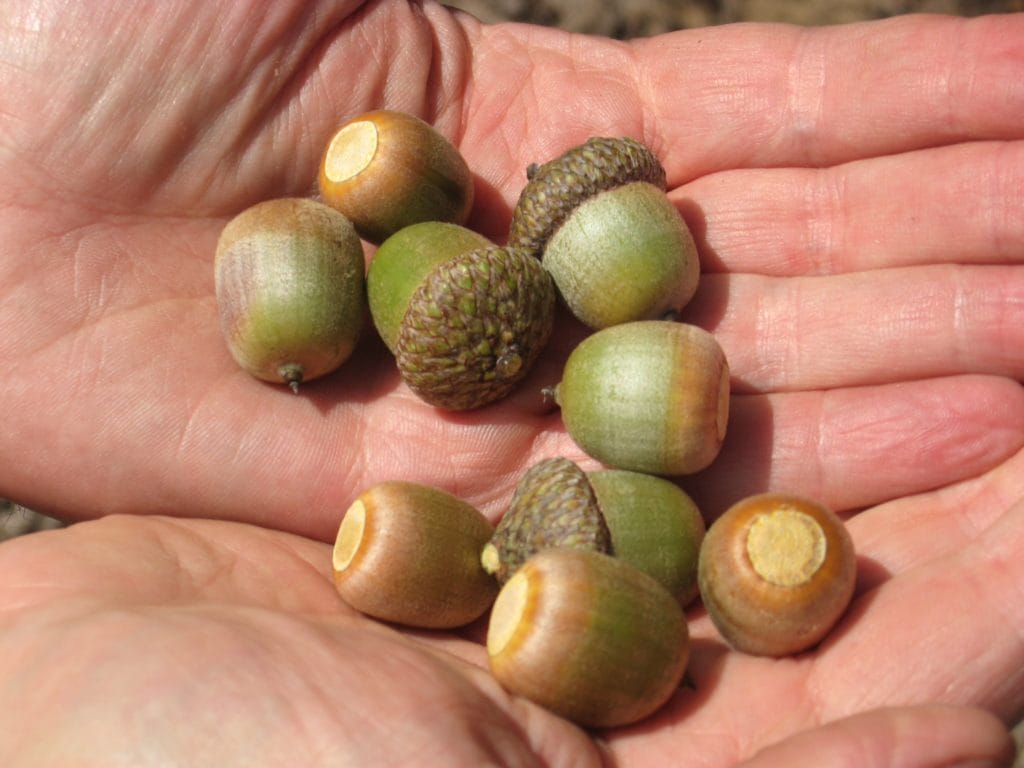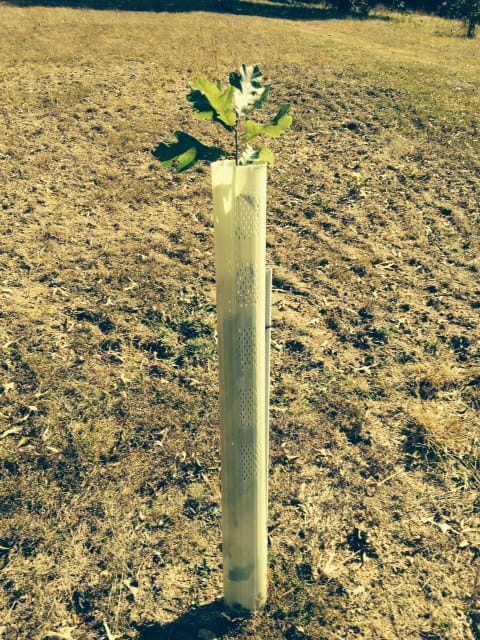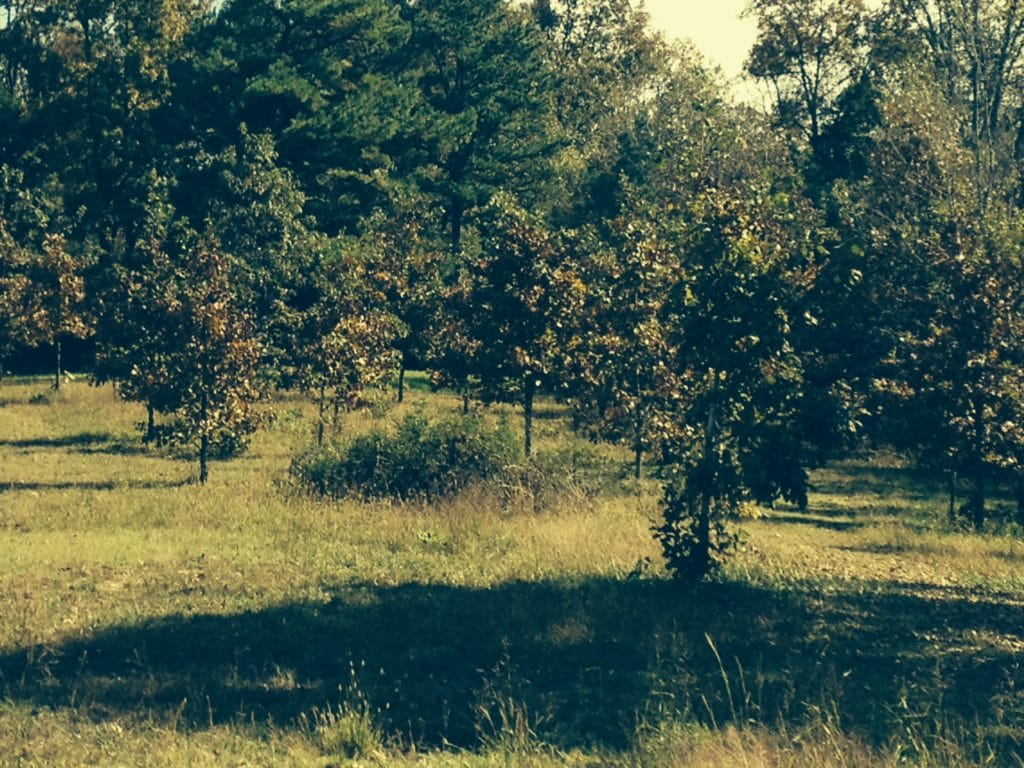

Uh oh...
It appears that you're using a severely outdated version of Safari on Windows. Many features won't work correctly, and functionality can't be guaranteed. Please try viewing this website in Edge, Mozilla, Chrome, or another modern browser. Sorry for any inconvenience this may have caused!
Read More about this safari issue.
Oak grove we planted 3 and 4 years ago.

If you’ve ever tried to transplant a tree by digging up a young tree in the wild you already know the success rate isn’t very good. You can, however, select a tree that is growing in the forest or by getting permission from a neighbor and gather a couple dozen acorns and germinate them.
Be sure to begin by selecting an oak tree that is colorful in the fall and is in a shape similar to what you would like to have on your property. If you want to grow a tree that is beneficial to wildlife you can’t go wrong with a parent tree that is of the white oak or red oak variety. Shumard oaks are an excellent choice, also.

The time to select your seed is a week or two after the first acorns start falling from the parent tree. This will be somewhere around the second or third week of October throughout the Natural State. The very first acorns to fall are usually wormy or faulty, so wait a couple of weeks and pick up the best looking and most solid feeling acorns. You might also pluck a few directly from the tree. You know they’re ready if they are easily removed from the cap.

Take them home and place them in a container of water and leave them a few hours or overnight. Discard the acorns that are floating and use the acorns that sink to the bottom. Let them dry and then place a couple of handfuls of compost or light soil. Make sure the soil is damp but not too wet, and dump the soil inside three plastic grocery bags placed inside each other. Don’t use Ziploc bags because the seed will need some air.
Now you are ready to place them in the crisper of the refrigerator. Freezing the seed will destroy their germination ability, so tie the top of the bags lightly together and put them through an artificial winter or the stratification process. It’s always fun to check them in a couple of months to see if they have germinated.
Around the end of February you can place the acorn into a small container. It is fine if it has begun germinating. Bury it a couple of inches deep. Place it outside and it will soon send a tap root to the bottom of the container and the top will spring upward. You will want to protect it from freezing temperatures. Make sure the container is not terribly deep because the tap root will go to the bottom and make it difficult to transplant in June.
The translating process is fun to share with a family member. My parent’s farm in north-central Arkansas where they built their house was grown up cattle pasture that needed to be cleared off and cleaned up. About four years ago, in an effort to return the land back to its peak and to create some much needed cover for the deer around our food-plots, dad and I found the perfect spot and planted a small grove of seedlings. We dug several holes about twice the depth of the small root balls and twice the width and then buried each seedling so that the top of the root ball was covered. Be careful to avoid planting too deep. We then placed tree tubes over the small trees. This creates a greenhouse effect and protects the young plants from wildlife. The tube will speed up the growth process by a third of the growing time. We returned the following year and planted a few more seedlings to complete the grove pictured here.

After you have picked out the perfect spot and transplanted the young tree be sure to keep it watered with about a gallon of water per week during drought condition and watch it grow. Red oak trees might take several months longer to germinate.
The fun part is sitting back and watching them grow.

Oak grove we planted 3 and 4 years ago.
We do the work.
You check your email.
Sign up for our weekly e-news.
Get stories sent straight to your inbox!






Like this story? Read more from Brian Hook
As we get into turkey season in Arkansas, hunters all over the state are...
OWWS provides combat injured 9/11-era veterans on an all expense paid...
1. Dollar Shave Club Now that we have made it through the burley...
Join the Conversation
Leave a Comment